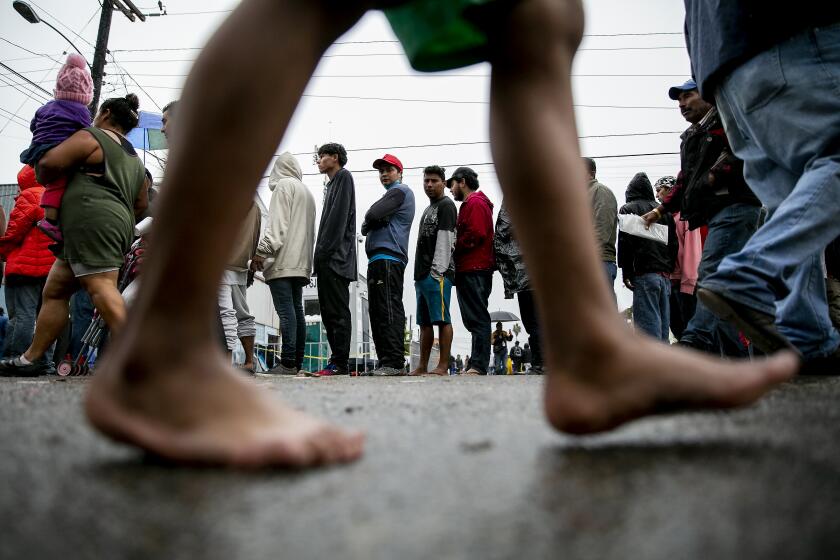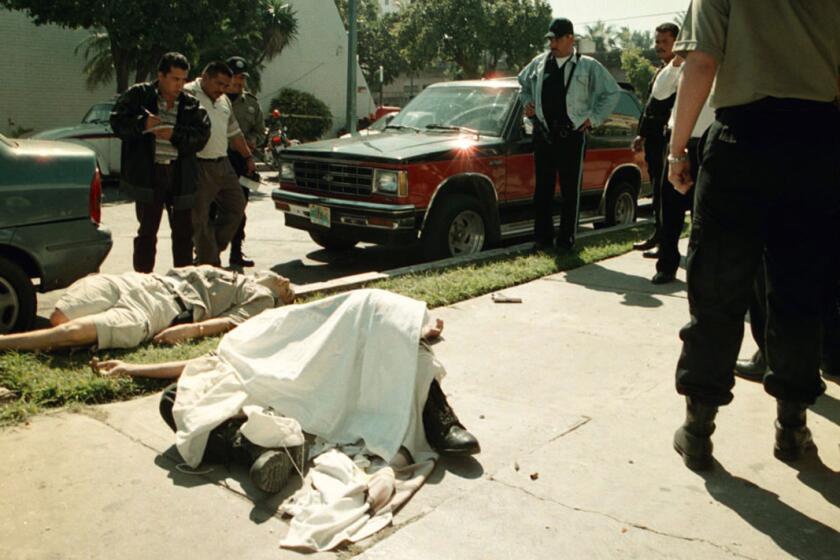Tijuana feels peso’s slide
From the cuts of meat served in the Argentine-style parrilladas, to the cherry tomatoes in the salads, many of the ingredients at the Cheripan restaurant in Tijuana’s gastronomic district come from San Diego.
For owner Juan Carlos Eguiluz, this poses a challenge. The Mexican peso has lost more than 20 percent of its value relative to the dollar over the past year, a slide that has raised the restaurant’s costs and cut into profit margins.

Tijuana feels peso’s slide: Stronger dollar stretches farther. The Cheripan Restaurant in Tijuana poses some challenges with the decrease value of the Mexican peso
“We can’t charge in dollars,” Eguiluz said one afternoon this week, seated before a heaping plate of warm empanadas. “Our price is in pesos.”
With an economy that is closely tied to San Diego, many businesses and residents across Tijuana are struggling under the peso’s declining purchasing power and some of the highest inflation rates in Mexico.
Yet for U.S. visitors to the city — or those Tijuana residents who work in San Diego — the peso’s depreciation can bring benefits, as the stronger dollar can stretch farther south of the border in paying for everything from airline tickets to haircuts to restaurant meals.
“This is a city with so many dollars that we can pay in Mexican pesos or the U.S. dollar without the cashier telling you anything,” said Carlos Leos Martínez, who leads Centros Cambiarios Asociados, a group of 98 Tijuana currency exchange businesses.
Two years ago, the official exchange rate was 13.4 pesos per dollar. A year ago, it was 14.8 pesos to the dollar. It has since inched up gradually, peaking last month at about 18.6 pesos to the dollar. But in Tijuana, money exchange houses last week were buying pesos at 17.20, and selling at 17.55 — a reflection of the large number of dollars in circulation in the city, Leos said: “This is the most dollarized city in Latin America.”
This is not the first time that Tijuana’s residents have contended with a drop in their currency’s value. Many remember Mexico’s 1994 devaluation, when it fell by 50 percent relative to the dollar. With the exchange rate now flexible, and the value determined by the market demand and supply of pesos, the shifts have been more gradual, said James Gerber, an economics professor at San Diego State University.
The peso’s current depreciation has been attributed to a range of factors, from the decline in Mexican oil prices to rising U.S. interest rates. Agustín Carstens, governor of Mexico’s central bank, told the Wall Street Journal last month that the peso is “severely undervalued” and that he expects it to appreciate.
“It’s too cheap in Mexico right now, if you have dollars,” Gerber said.
As the peso has depreciated, Tijuana has been experiencing higher inflation that the rest of Mexico. Last year, Tijuana’s overall inflation rate of 4 percent for 2015 was the second-highest in the country, after Tepatitlan, Jalisco, according to Mexico’s National Institute of Statistics and Geography.
Economist Ruben Roa said a month-by-month breakdown of the numbers shows the city’s inflation rates have been rising steadily since January 2015, and by last month had topped five percent, more than twice Mexico’s national rate of 2.43 percent.
Driving the region’s inflation were sizable price increases in sectors such as transportation, health and personal care, food and clothing, said Roa, who is leading an effort by the economic development councils of Tijuana, Rosarito Beach and Tecate to generate reliable data on the region.
But the peso’s depreciation is only one cause for the rise in the region’s prices, Roa said. Another factor pushing up prices, he said, has been the lagging effect of a five percent sales tax hike since January 2014 that put border regions on par with the rest of the country.
In Tijuana, members of the middle class have been the hardest hit, said Roa. “These are the people that are able to cross constantly to the United States, to buy necessities such as shoes and clothing, and consumer goods in general.”
Compounding the strain for residents is the cost of housing, as many real estate transactions as well as rental contracts for businesses and housing are negotiated in dollars.
Gilberto Leyva Camacho, president of the Tijuana Chamber of Commerce, said this has taken a toll on most of his 2,700 members who owe monthly rents in dollars. “Their income is in pesos, and their expenses are in dollars,” Leyva said. “This really hurts them.”
He said the situation is especially difficult for members whose businesses are heavily reliant on U.S. imports: Those who sell used U.S. cars, auto parts, tires, refrigerators, furniture and other goods. While their costs are rising, they can’t raise prices without losing clients, Leyva said.
At Cheripan restaurant, Eguiluz said he is not changing his habits, and continues to cross to purchase many of produce— sometimes even tomatoes exported from Mexico — because his business depends on offering consistently high quality. In Mexico, “there are ups and downs, and a restaurant needs to be constant,” he said.
In November, he raised prices 15 percent for the first time in four years, he said, and is reluctant to do so again.
Despite the challenges of recent months, Eguiluz said there have been some silver linings: As the dollar has strengthened, he has seen more U.S. customers in his restaurant. “They’re Mexican-Americans, or Americans who are taken by the hand by Mexicans, but they’re coming.”
sandra.dibble@sduniontribune.com
Get Essential San Diego, weekday mornings
Get top headlines from the Union-Tribune in your inbox weekday mornings, including top news, local, sports, business, entertainment and opinion.
You may occasionally receive promotional content from the San Diego Union-Tribune.











